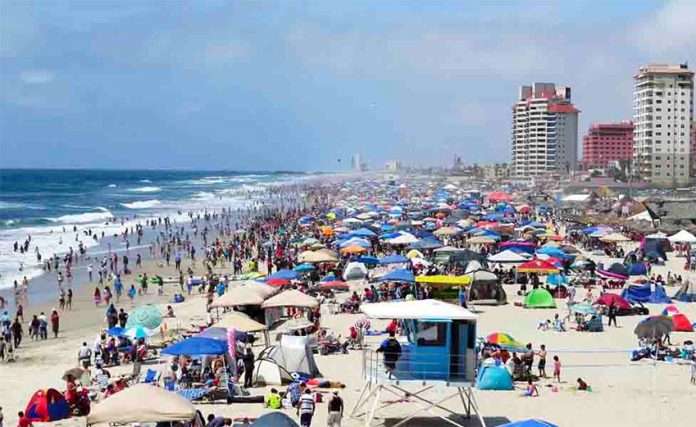Eight coastal tourist destinations — including Rosarito, Acapulco and Cancún — are among the 50 most violent locations in Mexico, official statistics show.
According to official data analyzed by the crime monitoring website elcri.men, a homicide rate of 142.8 per 100,000 inhabitants between April and September made Playas de Rosarito, Baja California, the third most violent municipality in Mexico behind only Armería, Colima, and Bocoyna, Chihuahua.
With a per-capita murder rate of 141.3, Manzanillo, Colima – a major port city as well as a tourist destination – ranked as the fourth most violent municipality in the country during the past six months, while a homicide rate of 118.8 made Tijuana, Baja California, the 10th most violent.
The resort city of Zihuatanejo, Guerrero, was the 12th most violent municipality, while the Caribbean coast municipality of Solidaridad, Quintana Roo – where Playa del Carmen is located – was 17th. Their per-capita homicide rates between April and September were 103.8 and 83.1 respectively.
With a rate of 68.1, Acapulco, Guerrero – once Mexico’s most glamorous beach destination – was the 28th most violent municipality.
Over the course of two days earlier this month, criminal groups set four public transit buses on fire on the Miguel Alemán coastal boulevard in the resort city, the newspaper El Universal reported. In addition, at least 200 transit workers have been killed in Acapulco during the past 10 years.
Also among the 50 most violent municipalities were Ensenada, Baja California, and Benito Juárez, Quintana Roo, where Cancún is located. With 44.4 homicides per 100,000 inhabitants, the former municipality ranked as the 48th most violent, while a per-capita murder rate of 41.3 placed Benito Juárez one spot lower at 49th.
Just over 11% of the 29,692 homicides in the first 10 months of the six-year term of President López Obrador occurred in the eight coastal municipalities. Mexico is currently on track to record its most violent year in recent history.
In addition to murders, many of Mexico’s popular beach destinations are affected by crimes including extortion and kidnappings.
Rubén Salazar, director of the risk analysis firm Etellekt, told El Universal that there are two main reasons for the presence of criminal groups in tourist destinations and the resulting high crime rates.
First, the influx of visitors makes them attractive for criminal activities such as drug dealing, so rival groups fight to control the market. Second, Pacific coast cities are not just tourist destinations but also entry points for illicit goods including synthetic drugs and precursor chemicals.
“A lot of these Pacific cities have maritime customs, they’re the country’s main ports and the main points of entry for precursors for the production of drugs such as methamphetamine,” Salazar said, adding that criminal organizations that control that market have displaced groups that formerly transported heroin produced in Guerrero.
The Sinaloa Cartel dominates on Mexico’s northern Pacific coast while the Jalisco New Generation Cartel holds sway farther south, he said.
Salazar said that people who haven’t benefited from tourism development have been lured into crime due to a lack of other options, adding that the government’s strategy to address social causes of violence will likely fail.
“The money that the federal government offers in scholarships or other support is insufficient. What organized crime offers . . . is a lot more attractive,” he said.
A number of popular inland tourist destinations also featured among the most violent locations in Mexico between April and September.
They included Taxco, Guerrero (26th most violent), San Miguel de Allende, Guanajuato (38th), Cuernavaca, Morelos (45th) and Morelia, Michoacán (50th).
Source: El Universal (sp)
